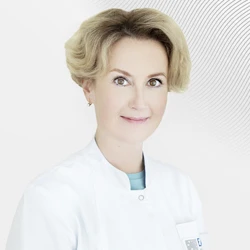Acute and chronic cholecystitis
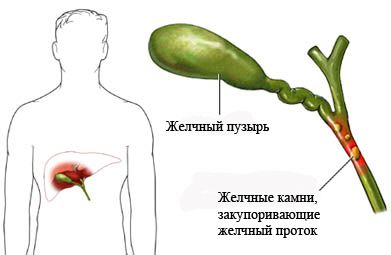
Cholecystitis is an inflammation of the walls of the gallbladder. It can occur both in the presence of gallstone disease and in the absence of gallstones.
Classification
According to the severity and duration of symptoms, acute and chronic forms of cholecystitis can be distinguished.
Acute cholecystitis
Is characterized by a sudden onset - within a few hours after a blockage of the cystic duct, severe pain in the right side of the abdomen, fever, changes in laboratory parameters (a significant increase in leukocytes, C-reactive protein). It is most often associated with a violation of the diet, excessive consumption of spicy and fatty foods, as well as sometimes with driving on uneven roads, stress, and taking choleretic drugs
In 90% of cases, this occurs in patients with gallstone disease, and only 5-10% occur in patients with acalculous (stone-free) cholecystitis. Gangrene and rupture of the gallbladder can be severe and sometimes dangerous complications of acute cholecystitis.
Chronic cholecystitis
Chronic cholecystitis is usually caused by repeated attacks of biliary colic, which cause the walls of the gallbladder to thicken as a result of inflammation and impaired motor activity. Over time, chronic stagnation of bile occurs in the gallbladder, leading to an increase in its concentration and precipitation of cholesterol/ bilirubin, followed by the formation of stones.
Reasons
With prolonged stagnation of bile in the gallbladder, bile components (most often cholesterol) begin to crystallize and precipitate. Microscopic crystals increase in size over time, merge with each other and form stones.
The gallbladder is normally pear-shaped. Its length is 7-10 cm, width — 3-4 cm, capacity — 40-70 ml (in women, the gallbladder in a state of functional rest has a slightly larger volume than in men, but shrinks faster). It distinguishes between the bottom, the body and the neck, passing into the cystic duct. The outflow of bile from the gallbladder is regulated by the Lutkens sphincter, and from the common bile duct by the Oddi sphincter.
On average, up to 1.5 liters of bile are formed in the human body per day. However, its entry into the intestine normally occurs mainly during digestion. This is ensured by the reservoir function of the gallbladder and its rhythmic contractions with successive relaxation of the aforementioned Lutkens sphincter and then the Oddi sphincter located at the confluence of the common bile duct into the intestine. In the gallbladder, bile is concentrated 5-10 times.
Risk factors for gallstones:
Genetic predisposition.
Age from 40 to 70 years.
Female gender: the level of estrogen in the blood, taking oral contraceptives, pregnancy significantly increase the risk.
Poor nutrition and sudden weight changes:
-
eating high-cholesterol foods;
-
increased consumption of fats and refined carbohydrates;
-
unbalanced nutrition, lack of a power regime;
-
long-term parenteral nutrition;
-
fasting, rapid weight loss: weight loss of more than 24%, weight loss of more than 1.5 kg per week, low-calorie diets by reducing the amount of fat.
-
Metabolic disorders (metabolic syndrome, diabetes mellitus).
Crohn's disease (an inflammatory bowel disease that leads to a deterioration in the absorption of bile salts from the intestine), certain blood diseases, cirrhosis of the liver.
Signs and symptoms
Cholecystitis is characterized by pain in the right hypochondrium or in the epigastric region, radiating to the right shoulder blade, shoulder or collarbone. They are dull or paroxysmal in nature, varying in intensity and duration.
With biliary colic, the intensity of pain often increases within an hour, then the pain becomes constant for several hours, after which it gradually decreases and disappears when the movable stone returns to the gallbladder cavity. There is no pain between attacks.
Complications
If the attack lasts more than 6 hours, is accompanied by vomiting and fever, there is a high probability of developing acute calculous cholecystitis (inflammation of the gallbladder), mechanical jaundice associated with blockage of the bile duct, or pancreatitis (acute inflammation of the pancreas). All of these conditions require urgent hospitalization and emergency surgical care.
Long-term stone carriage is accompanied by secondary infection and the development of chronic cholecystitis, which leads to various diseases of the liver and pancreas. In addition, long-term inflammation increases the risk of developing gallbladder cancer.
Diagnostics
When seeking medical help, the patient is necessarily examined by a surgeon, and even before performing instrumental diagnostic methods, the doctor checks for some specific symptoms indicating the presence of acute cholecystitis:
-
Ortner's symptom is pain that appears in the gallbladder area when the edge of the palm is lightly beaten along the right costal arch;
-
Murphy's symptom is an increase in pain that occurs when the patient feels the gallbladder with a deep breath. If the patient's deep sigh is interrupted before reaching height due to acute pain in the right hypochondrium under the thumb, then Murphy's symptom is positive;
-
Courvoisier's symptom is an enlargement of the gallbladder detected by palpation of the elongated part of its bottom, which protrudes quite clearly from under the edge of the liver;
-
mussy's symptom (frenicus symptom) – soreness on palpation in the area above the collarbone.
After the examination, the patient undergoes a wide range of instrumental diagnostic measures (the scope of which may vary depending on the severity and duration of symptoms):
-
ultrasound examination of abdominal organs,
-
MSCT of the abdominal cavity, in some cases MRCG (magnetic resonance cholangiopancreatography),
-
laboratory tests: general blood test with leukocyte formula, C-reactive protein, biochemical blood test.
Treatment of cholecystitis
Treatment of patients with acute cholecystitis is aimed at reducing the severity of inflammation and, in most cases, subsequent removal of the gallbladder (cholecystectomy).
Conservative treatment
As part of conservative (non-surgical) treatment, infusion therapy (replenishment of fluid balance, correction of water-electrolyte disorders) and antibacterial therapy are performed. Antibiotics are used in almost all cases of cholecystitis (with the exception of mild course and in the absence of stones). The duration of admission is determined by the rate of regression of clinical symptoms, as well as the laboratory picture.
The following bacterial agents are most often detected in bile: Escherichia coli (41%), Enterococcus (12%), Klebsiella (11%) and Enterobacter (9%). The ideal scheme of antibacterial therapy should be effective against all bacterial agents. The most commonly used amoxicillin with clavulonic acid for at least 5 days.
It is extremely important to provide adequate anesthesia, and thereby reduce the patient's suffering. Classical drugs from the group of nonsteroidal anti-inflammatory drugs (ibuprofen) are more often used, but sometimes opioid analgesics have to be resorted to. The latter are rarely used due to the fact that they can increase pressure in the area of the Oddi sphincter and thereby further aggravate the patient's condition.
We do not recommend using drugs that affect the rheology of bile and help dissolve gallstones in case of cholelithiasis, due to their potential danger – they can provoke choledocholithiasis (the "loss" of small stones into the bile duct and blockage of the latter with the appearance of a severe and potentially life-threatening condition - mechanical jaundice).
Surgical treatment
With large stone sizes and in the presence of certain concomitant diseases (for example, diabetes mellitus), with pathological changes in the gallbladder itself, the doctor may recommend removing the gallbladder.
Removal of the gallbladder is the "gold standard" in the treatment of calculous cholecystitis on the background of gallstone disease. Patients who do not require emergency surgery (stone-free cholecystitis, mild inflammation) should be stratified by risk to determine whether they require early or delayed gallbladder surgery.
If the patient is worried about biliary colic attacks, surgeons recommend elective cholecystectomy. Each subsequent attack can cause the development of acute cholecystitis with severe complications from the liver and pancreas.
Advantages of performing cholecystectomy in EMC
In the postoperative period, the patient continues to be monitored with a certain frequency by an EMC gastroenterologist, who corrects possible (but rather rare) side effects of surgical treatment.
Diet and nutrition
Of course, following a strict diet (and in some cases, starvation is possible) is important in the presence of acute inflammation. The patient is recommended a diet with the exception of spicy, fried and fatty foods, 4-6 meals a day in small portions (in the presence of vomiting, meals through a nasogastric tube).
Prevention
EMC doctors recommend that patients who have problems with the gallbladder, and if a small stone is discovered for the first time, be regularly monitored by gastroenterologist and undergo ultrasound examination of abdominal organs every six months. Active monitoring will make it possible to find and eliminate the causes of stone formation and other complications without surgical intervention.
There is no evidence indicating the effectiveness of following a strict diet in the prevention of cholelithiasis. All dietary recommendations are general in nature and ultimately come down to moderation in the consumption of potentially harmful foods (fast food, fatty and fried foods, overeating).
Why the EMC
The first and only clinic in Russia, created in the image of the world's leading clinics
EMC is a multidisciplinary center offering patients a high level of medical services and a personalized approach
Worldwide recognition and awards
 Learn more
Learn more
Worldwide recognition and awards
 Certificates and licenses
Certificates and licenses
Make an appointment for a consultation
Specify your contacts and we will contact you to clarify the details
Reviews
and new products of the EMC

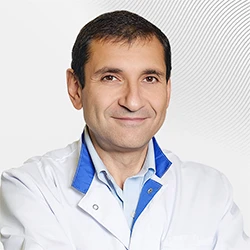

.webp)
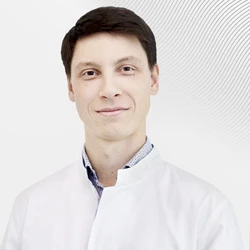

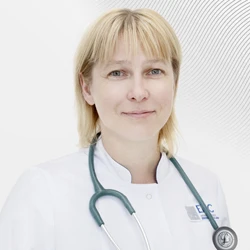
.webp)
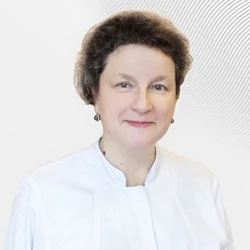
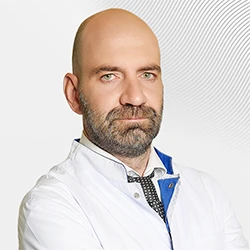
.webp)
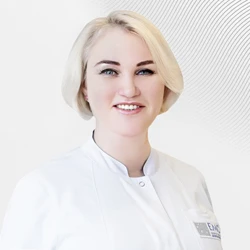
.webp)
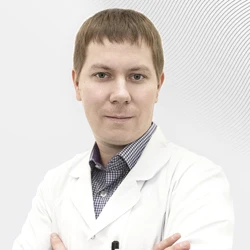
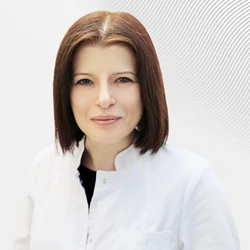
.webp)
.webp)
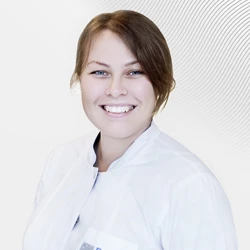
.webp)
